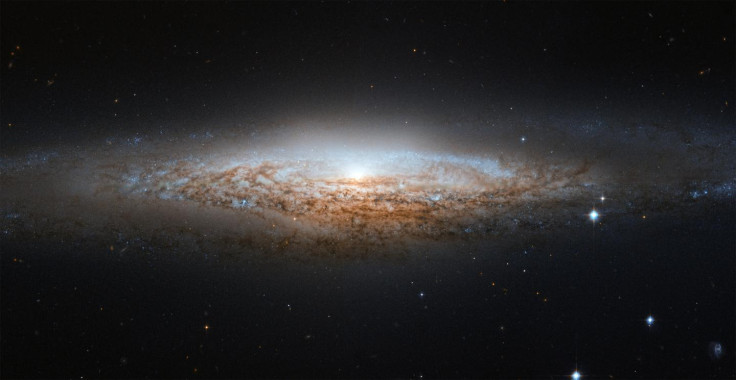Vast halo of hydrogen gas engulfing the entire Milky Way seen for the first time
The enormous halo of hydrogen gas makes up a big portion of the galaxy's ordinary matter.
Much of our galaxy's mass is not contained in the central bulge or spiral arms of the Milky Way, but is found instead a galactic halo of hydrogen gas. After being hypothesised for years, this has now been directly observed for the first time.
The gigantic halo was discovered by sifting through observations of about 730,000 other galaxies for a spectral line called hydrogen alpha. This shows neutral, atomic hydrogen that is not ionised, as it is in 99.99% of intergalactic gas, or in molecular H2 form, as it is on Earth.
Although the halo is enormous, it is extremely hard to spot.
"It's like peering through a veil," said study author Dennis Zaritsky of the University of Arizona. "We see diffuse hydrogen in every direction we look."
The fact that the gas is perceptible in every direction posed another puzzle: exactly where was it?
"When you see things everywhere, they could be very close to us, or they could be very far away," he said. "You don't know."
If close up within the Milky Way, the gas would appear to be pretty much stationary compared with the galaxy. If far away, it would be possible to see a bit more relative motion between the galaxy and the halo.
"Indeed, in one direction, we see the gas coming toward us, and the opposite direction, we see it moving away from us," Zaritsky said. "This tells us that the gas is not in the disc of our galaxy, but has to be out in the halo."
The Milky Way's halo has been predicted and assumed in calculations for years from the composition of ordinary and dark matter in the galaxy. Dark matter emits no light or other electromagnetic radiation and does not interact with ordinary matter.

There is a well-known ration of ordinary matter to dark matter. The dark matter of the Milky Way would predict more ordinary matter in the galaxy than has been observed before. Until now, instruments have only been able to detect about half of the ordinary matter predicted to make up the galaxy.
The halo appears to be stable and not gaining or losing mass.
"The gas we detected is not doing anything very noticeable," said Zaritsky. "It is not spinning so rapidly as to indicate that it's in the process of being flung out of the galaxy, and it does not appear to be falling inwards toward the galactic centre, either."
The research is published in the journal Nature Astronomy.

© Copyright IBTimes 2025. All rights reserved.






















